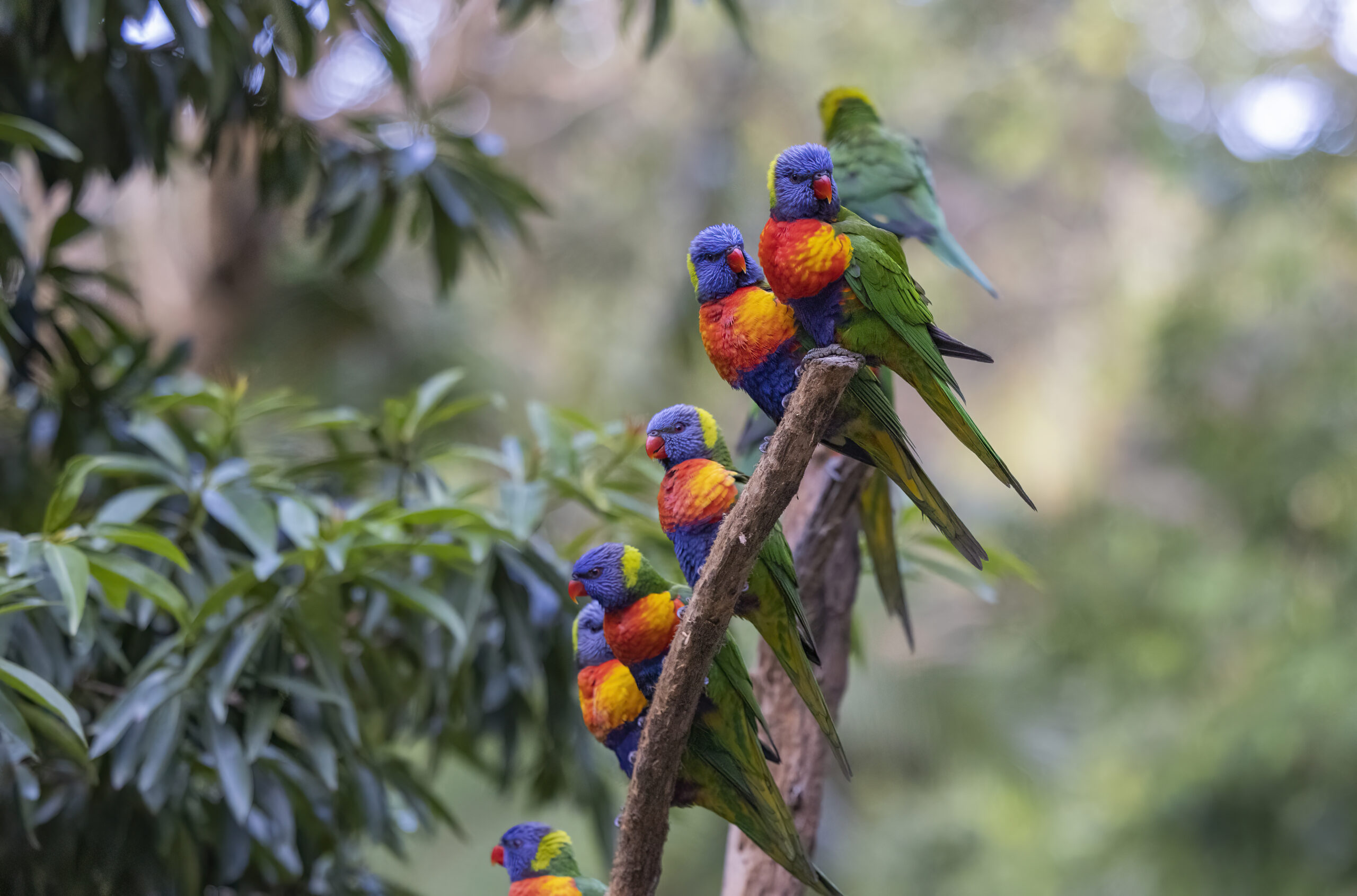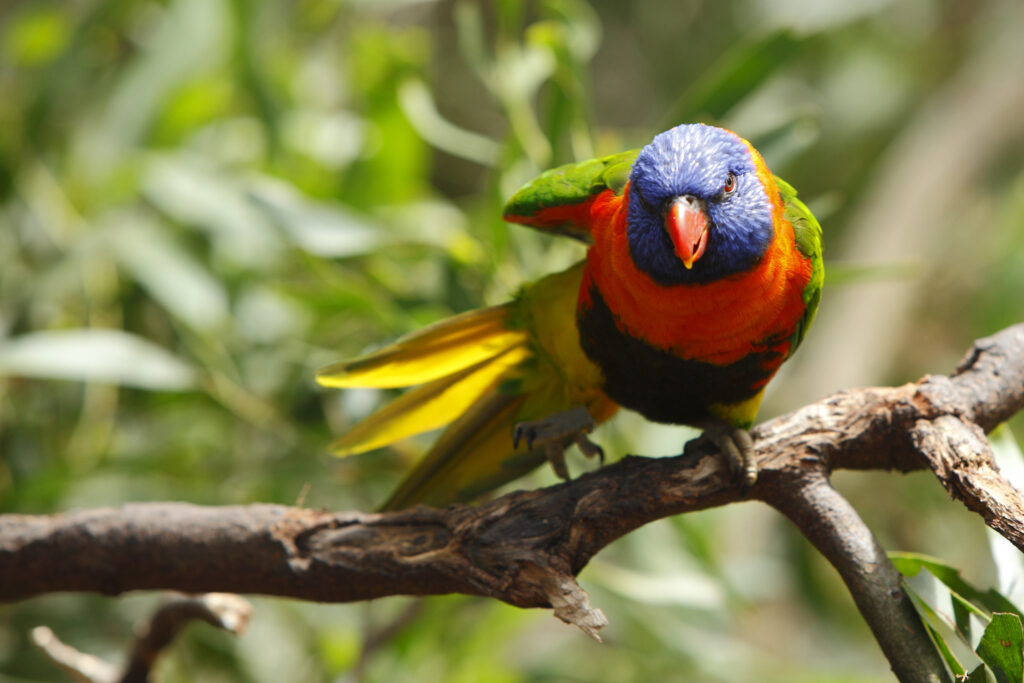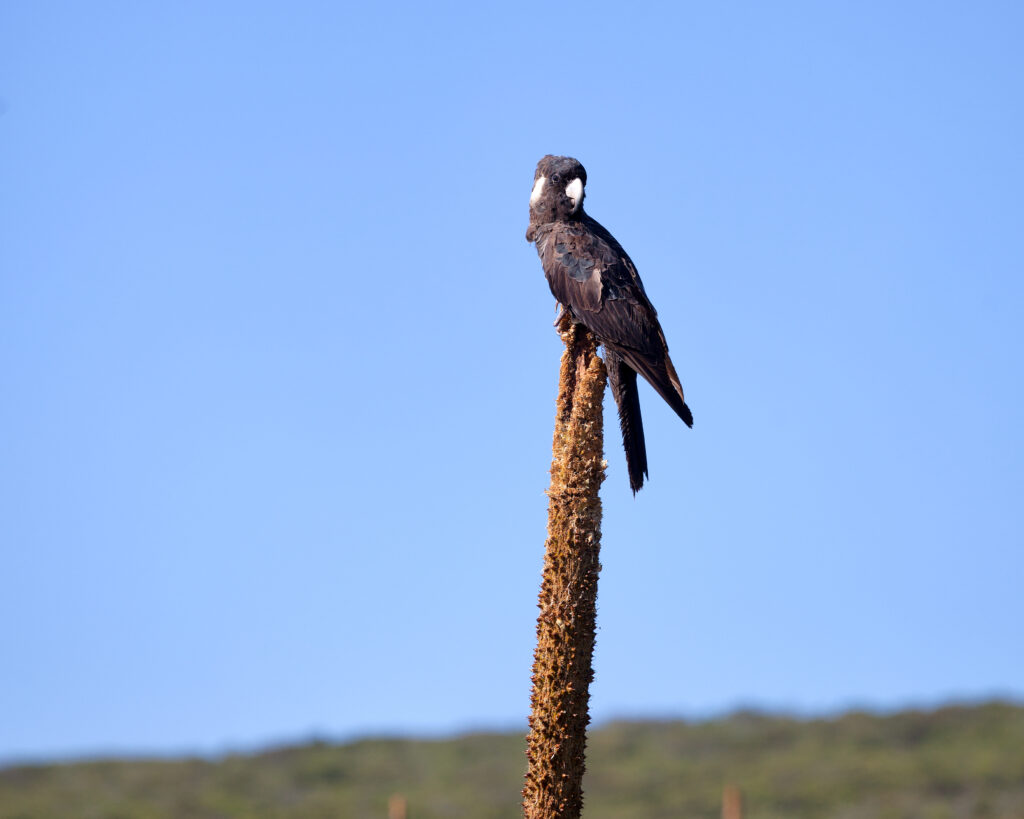On the suburban streets of Perth, you’ll hear them before you see them – a screeching chorus overhead. You look up at the cotton palms.
There! A colourful little head peeps out over the base of a frond.
And there! A jaunty green tail.
The rainbow lorikeet – a fixture of metropolitan Perth.
While they add colour (and noise) to our neighbourhoods, you may be surprised to learn that they’re not native to Western Australia. In fact, they’re classed as a pest.
A BIRD OUT OF HAND
We don’t know the true origin story of Perth’s rainbow lorikeets. However, wildlife authorities speculate that it all started from fewer than 10 birds that escaped captivity in 1968.
Today, the population of rainbow lorikeets in Perth has exploded to over 40,000.
The Department of Primary Industries and Regional Development describes them as an extreme threat because of their great ability to take over new environments.
Rainbow lorikeets are aggressively protective of their nesting and feeding resources. This is a potential cause of displacement for less-aggressive native birds like the Carnaby’s black cockatoo and the Australian ringneck.
In addition to pushing them out of their homes, rainbow lorikeets can carry and spread beak and feather disease to native species.
As if that’s not enough, these pretty belligerent birdies are a significant agricultural pest.
They’re known to cause substantial damage to fruit, vegetable and grain crops across the Perth Hills and Swan Valley regions.
Currently, rainbow lorikeets are estimated to damage up to $3 million worth of commercial fruit crops each year.
THE END OF THE RAINBOW?
Even though rainbow lorikeets can be a cheerful sight in urban environments, managing their population size is in the best interests of WA and our unique local wildlife.
Because of the threat they pose, individuals are permitted to remove or disturb rainbow lorikeets from any local government area south of the Kimberley.
However, the metropolitan population has become so large that eradication, if possible, will be difficult and expensive.
The rainbow lorikeet has been the most spotted bird in Birdlife Australia’s annual backyard bird count for the past 9 years!
(DON’T) FEED THE BIRDS
Despite their perseverance, there are still actions you can take to help manage rainbow lorikeets.
At home, you can trim dead fronds from your cotton and date palms to remove potential roosting sites. Better yet, Birdlife Australia recommends replacing these trees with native plants.
Remember not to feed lorikeets or ever release them from captivity.
You can become a citizen scientist by participating in Birdlife Australia’s Operation Rainbow Roost, a survey that tracks rainbow lorikeet nesting sites. This data will help researchers understand the spread and impacts of rainbow lorikeets in WA. Your bird watching can help inform how we manage these pesky parrots and support native bird species into the future.











